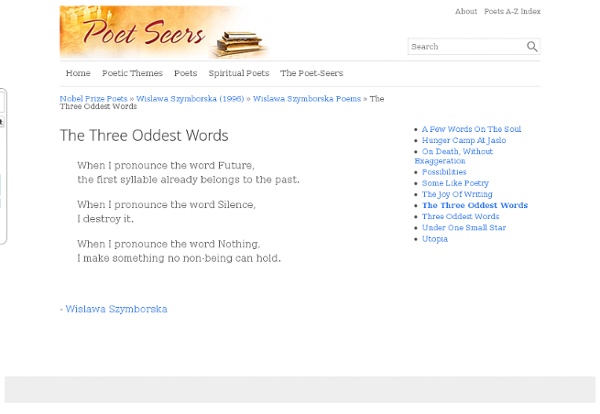



untitled Admired in her time, this author fell quickly from view, but her genius is now being rediscovered. The literary star known as “L.E.L.,” pen name of the British poet, novelist, and critic Letitia Elizabeth Landon (1802-1838), rose to prominence around 1824. But after her death in 1838 in Africa, her fame went into occultation, and her works were largely lost from public view until the last two decades. It is a tantalizing mystery, in many respects. Why, with her brief but impressive career, did Letitia Landon fade so quickly and utterly from the literary world?
ancient egyptian poetry by PoetryGrrrl on February 17, 2014 the Temple of Ramses II at Abu Simbel. An excerpt from an article titled Ancient Egyptian Love Poems Reveal a Lust for Life by Cameron Walker for National Geographic News, pub. 3 Mind-Blowing Lateral Thinking Puzzles Have you ever wondered if your mind is normal (i.e. average) or somehow different? Here are 3 lateral thinking tests. The answers are published below, but do not go immediately to read them! Think up your own answers first. Tests 102 Spectacular Nonfiction Stories from 2012 Each year, I track the most exceptional stories I encounter while assembling my twice-weekly newsletter, The Best of Journalism, as well as acting as an editor-at-large for Byliner. These projects afford me the opportunity to read as much impressive nonfiction journalism as any single person possibly can. The result is my annual Best of Journalism List, now in its fifth year. If you’re feeling nostalgic, here’s the 2011 edition. There are, of course, worthy pieces of writing and reporting that escaped my attention in 2012, but I can assure you that all of the 102 stories listed below deserve wider attention—as do the authors of these stories. The featured bylines are linked to the authors’ Byliner writer pages, which makes it easy to discover and read more of their excellent work.
How To Mix Chalkboard Paint in Any Color We love using chalkboards as backdrops for displays and parties (like this one here!). So we were super excited to learn that you can create your own custom colors-and it's really easy! We first learned how from Martha Stewart whose tutorial you can read here. She recommends that you use latex paint, but we tried it out with acrylic paints with much success.
untitled Jennifer Hardner ’01Cedar Crest College A Biography of Landon using "Love’s Last Lesson" Letitia Elizabeth Landon was born in London in 1802. She had a younger brother and a younger sister. writing ideas Enter your e-mail to get the e-book for FREE. We'll also keep you informed about interesting website news. "I have searched the web and used different worksheets, but none have come close to your worksheets and descriptions of (what to do and what not to do). Both courses I have taken have with Creative Writing Now have been amazing. Each time I have learned something new. The one thing I love, you take everything apart and give examples." - Katlen Skye
25 Romantic Words That Don’t Exist in English But Should Sometimes words aren’t enough to communicate with the object of your affection — English words, that is. In case you aren’t lucky enough to speak 12 languages fluently, we’ve compiled a love and dating-themed vocabulary list drawn from sources as varied as Tagalog, Dutch, and Inuit. Get over your saudade, indulge in a little cafuné, and you’ll be queesting in no time. 1. Mamihlapinatapai (Yaghan, Tierra del Fuego) – This term, which holds the Guinness World Record for “most succinct word,” means “looking at each other hoping that either will offer to do something which both parties desire but are unwilling to do.” Source
short stories at east of the web A game of Scrabble has serious consequences. - Length: 4 pages - Age Rating: PG - Genre: Crime, Humor